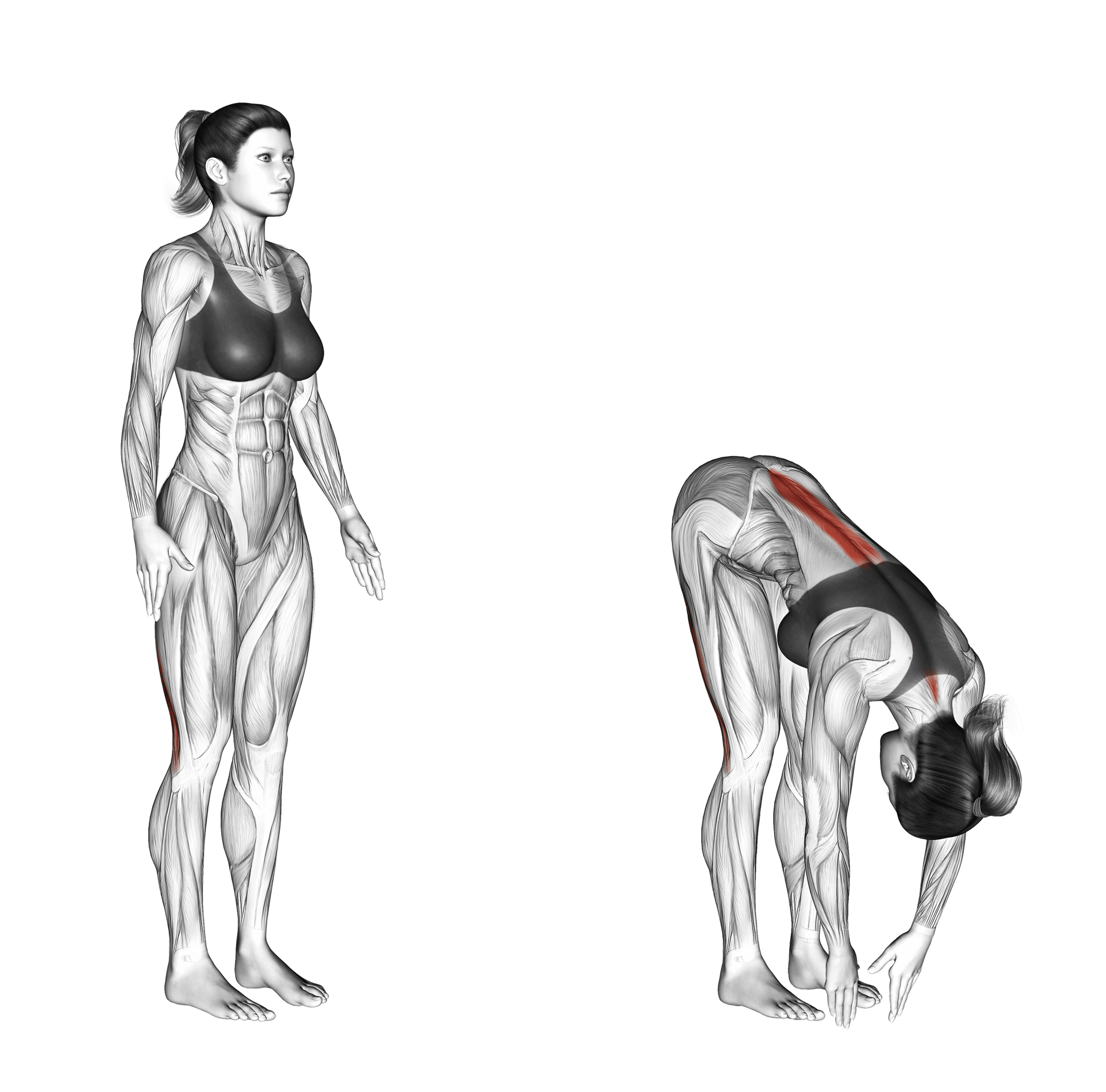Standing Hamstring Stretch

Overview
- Primary Focus:
- Upper legs.
- Equipment:
- Body weight.
- Difficulty:
- Beginner.
General Information
Standing Hamstring Stretch is an isolation exercise that primarily targets the hamstrings and also engages the back. It is a beginner-level movement used to improve flexibility, relieve posterior chain tightness, and prepare the hips for hinging tasks.
This stretch can be performed anywhere and requires only body control. It is useful before or after training, during mobility sessions, or as a short break from prolonged sitting to reduce stiffness.
Adjust hip position and torso angle to emphasize different portions of the hamstrings. A slight knee bend shifts sensation away from the back of the knee and into the muscle belly, while dorsiflexing the ankle increases tension along the posterior chain.
It works well for general mobility, recovery days, and as an accessory between sets to maintain range of motion without excessive fatigue.
Muscles Worked
- Biceps Femoris
- Primary
- Semimembranosus
- Primary
- Semitendinosus
- Primary
- Erector Spinae
- Medium
- Gluteus Maximus
- Low
- Gastrocnemius (Lateral Head)
- Minimal
- Gastrocnemius (Medial Head)
- Minimal
Instructions
- Stand tall with your feet about hip-width apart and knees slightly bent.
- Engage your core and slowly hinge forward at the hips, keeping your spine long.
- Let your arms hang toward the floor or reach toward your toes without rounding your back.
- Stop when you feel a gentle stretch along the back of your thighs and lower back.
- Keep breathing slowly and evenly; avoid bouncing or forcing the stretch.
- Hold for 20-30 seconds, then slowly roll back up to standing.
Common Mistakes
Injuries
Standing Hamstring Stretch is a low risk exercise when performed with proper technique.
Common strain points include the lower back and the backs of the knees, especially if you lock your knees or round your spine. Keep a soft bend in both knees and hinge at the hips to protect your back and joints.
Reduce your range of motion if you feel any pinching or nerve-like pulling, and stop if discomfort persists. Progress gradually by holding a slightly deeper position while maintaining a neutral spine and relaxed breathing.

Frequently Asked Questions
- Q: How long should I hold each side?
Hold 20 to 40 seconds per side at a mild to moderate stretch while breathing calmly.
- Q: Should my knee be locked straight?
No. Keep a micro bend to protect the knee and to place the stretch in the hamstrings instead of the joint capsule or calf tendon.
- Q: What if I feel it mostly behind the knee?
Bend the knee slightly and reduce ankle dorsiflexion to shift the stretch toward the hamstring muscle belly and away from the back of the knee.
Overview
- Primary Focus:
- Upper legs.
- Equipment:
- Body weight.
- Difficulty:
- Beginner.